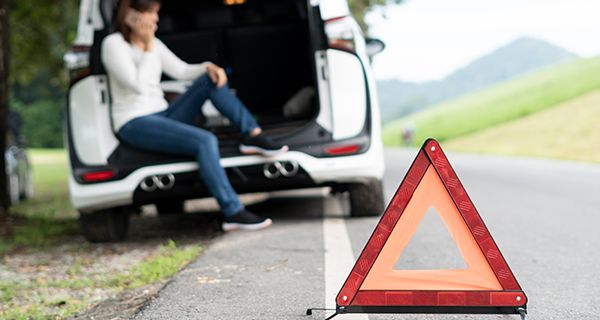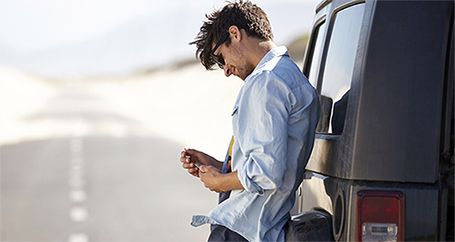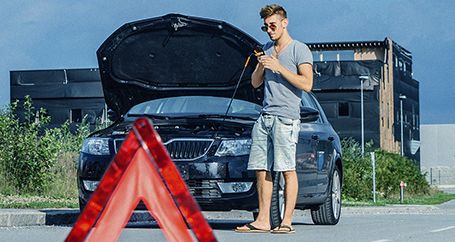
Answer The first thing to do when you have a flat tire: get yourself to a safe area.
If you’re driving when you get a flat tire, don’t jam on the brakes. Slow down to 15-20 mph and pull off the road to a safe spot as soon as you can. Don’t stop on the roadway.
If you come back to a parked car and find a flat, look around and make sure your situation looks safe. If not, go back inside and call for help.
After taking care of your safety, here’s what to do about a flat tire:
Don’t drive on it. Unless you have special run-flat tires designed to run 50 miles to 100 miles when flat (about 14 percent of new cars come with them, according to data from Edmunds.com), drive only as far as necessary. That means just as far as it takes you to reach a safe, level spot, out of traffic — ideally, several hundred yards maximum.
Driving on a flat tire can be dangerous because it drastically changes the way a car operates. It can also damage the wheel, brakes, alignment and other components of the car’s suspension and steering system.
Call for help. Family or friends or your roadside assistance company can help. (Talk to an agent about Farmers towing and road assistance.) You may also be able to get help by calling your insurance company.
Don’t have a spare? Today, many new cars don’t come with a spare tire, according to Edmunds.com. Instead, to save weight and improve mileage, car makers may provide a can of tire sealant and an air pump. This may get you back on the road if you have minor tire damage, but otherwise you’ll need to call for help.
If you don’t need help, change your tire. You’re in good shape if you have a full-size spare tire, and it’s inflated. It should be enough, in most cases, to get you to a garage or tire store where a flat can be fixed or you can buy a new tire.
If you feel comfortable changing the tire yourself, here are some tips we learned on how to change a tire:
Make sure your car is in park and the parking brake is on.
Turn on your hazards to make it easier for other drivers to see and avoid you.
Locate your spare tire and jack. Spares are usually in the trunk, on the back of your vehicle or suspended underneath it. Your owner’s manual can help you find and remove it.
Remove the flat tire.
- First, loosen the lug nuts (but don’t take them all the way off) with your tire iron. Turn them counterclockwise, and step on the tire iron if they’re hard to turn by hand.
- Jack up your car until the wheel is no longer touching the ground.
- Pull off the lug nuts and wheel.
Install the spare. Slide it on and put the lug nuts back on, but tighten only by hand. Lower and remove the jack. Then, with the car fully on the ground, use your tire iron to fully tighten the lug nuts.
Drive to a service station or tire store. If you installed a compact spare, you’ll need to replace it with a full-size tire before going too far. If the damage is minor, you may be able to have the damaged tire repaired and reinstalled. If you installed a full-sized spare, consider having the air pressure and your DIY installation checked by a tire professional.
Keeping your tires properly inflated is one of the best ways to prevent a flat tire. Find out more about preventing flats.
Farmers Car
Insurance
Find out why auto
insurance from
Farmers is a smart
choice.
The information contained in this page is provided for general informational purposes only. The information is provided by Farmers® and while we endeavor to keep the information up to date and correct, we make no representations or warranties of any kind, express or implied, about the completeness, accuracy, reliability, suitability or availability with respect to this article or the information, products, services or related graphics, if any, contained in this article for any purpose. The information is not meant as professional or expert advice, and any reliance you place on such information is therefore strictly at your own risk.
Related articles



